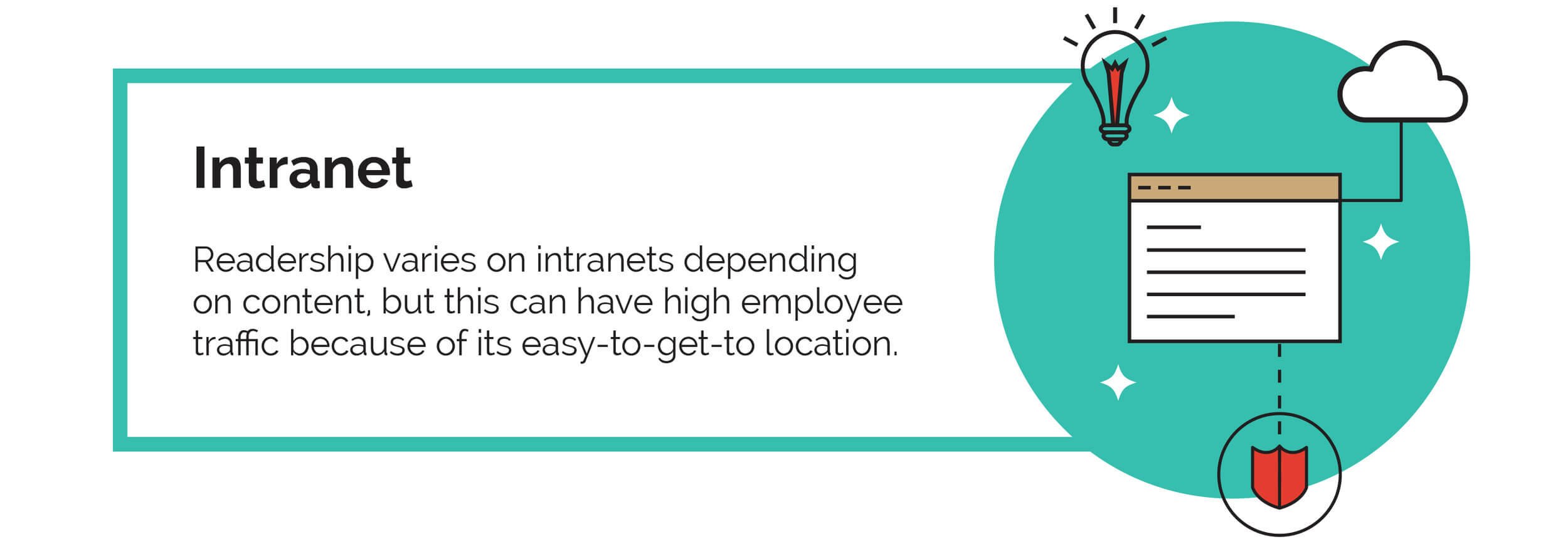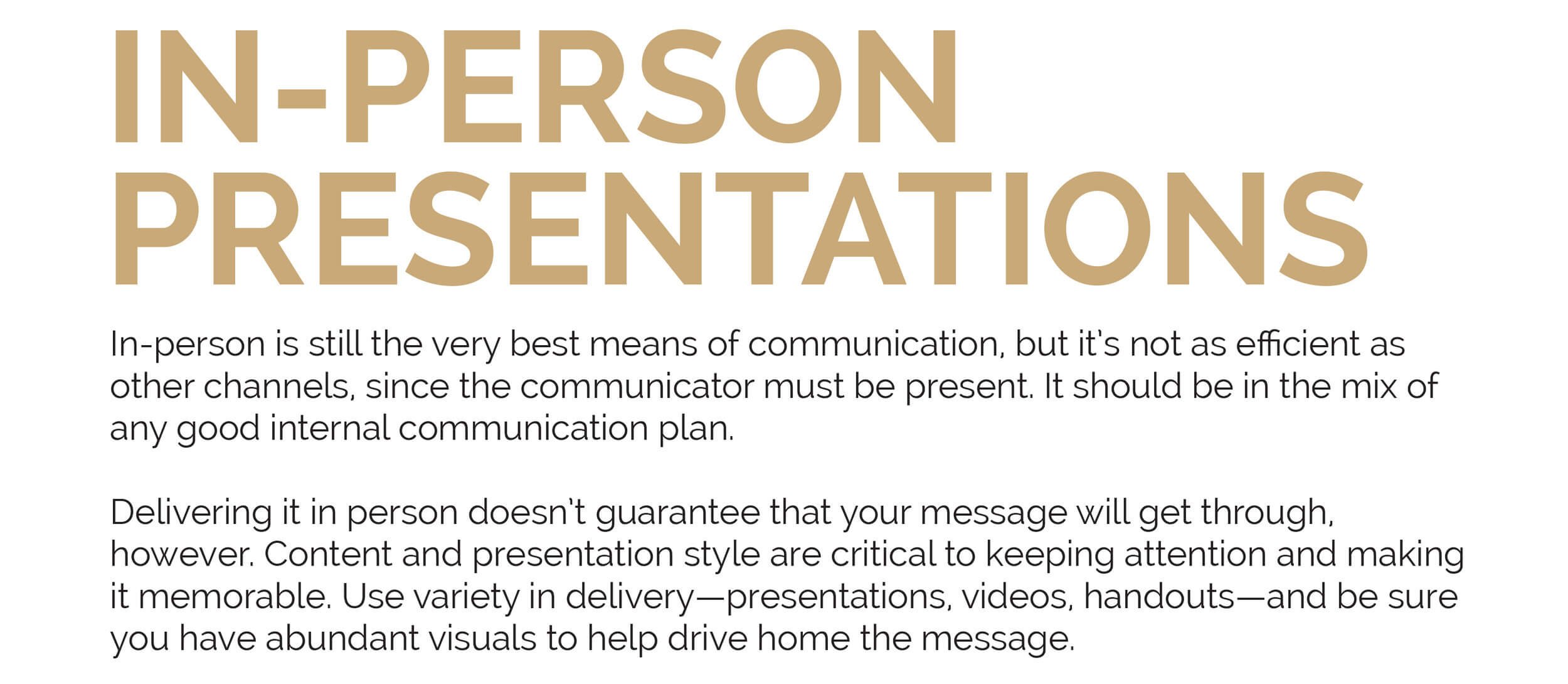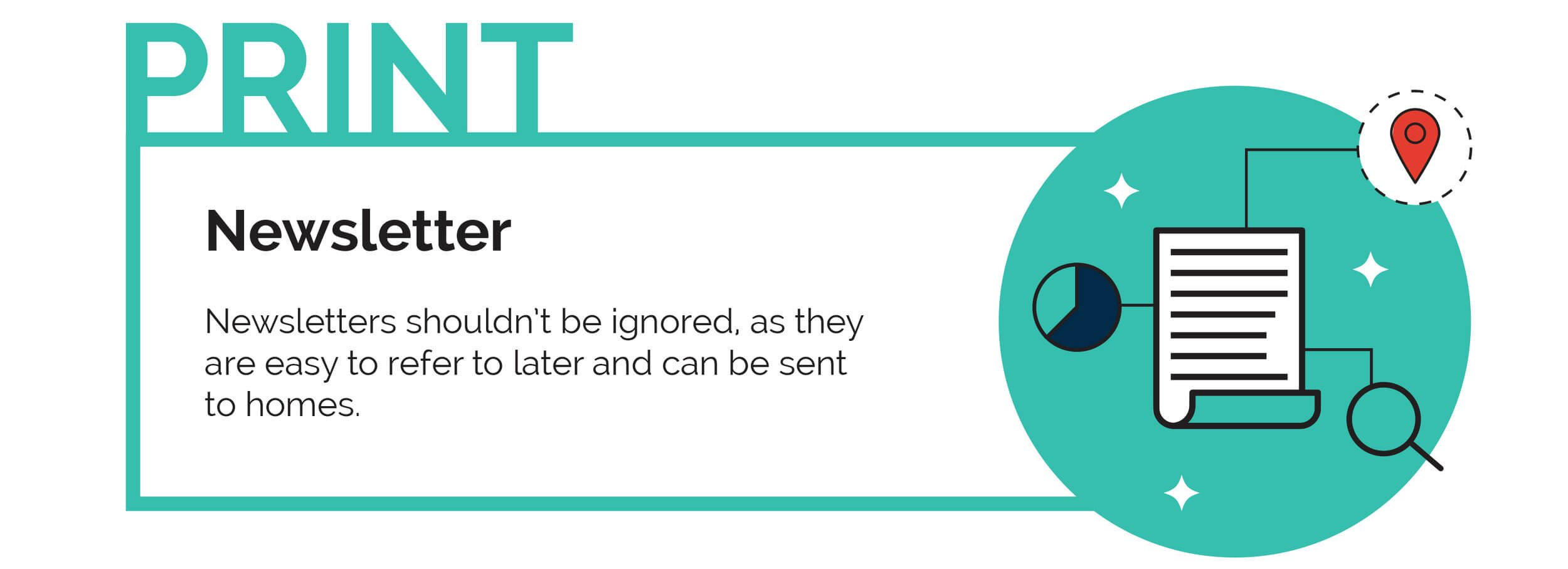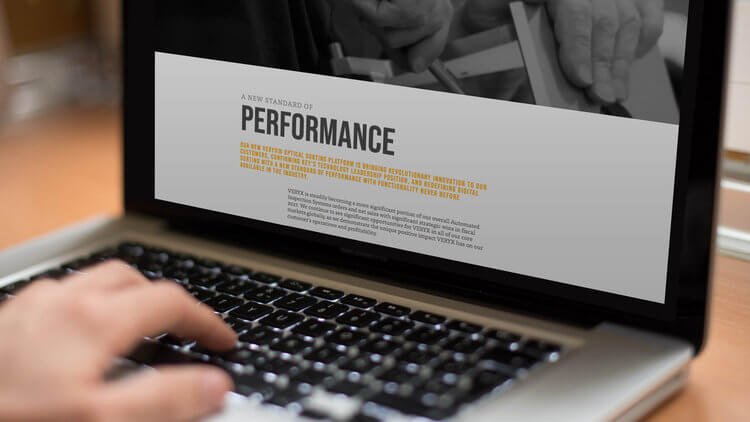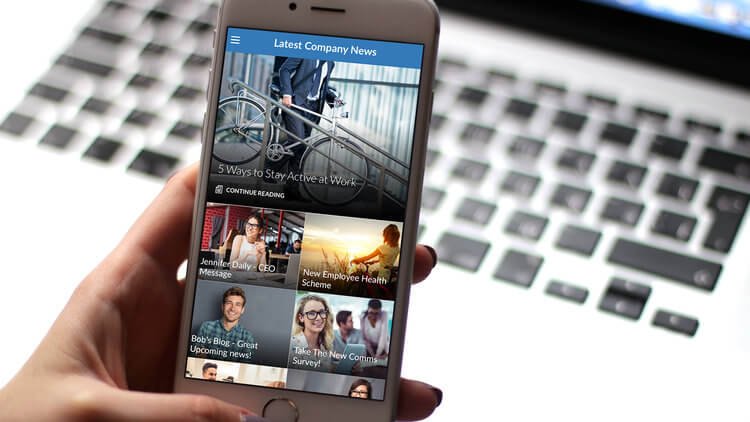VIDEO
People remember 20% of what they hear, 30% of what they see, but 70% of what they see and hear. So it's no surprise that video is the most powerful communication tool there is. Video can combine arresting visuals with sound and motion, making it more engaging to the human brain than any other form of communication.
Video is versatile for internal communication too, because it comes in all price points and many formats—from whiteboard explainers and motion graphics to interview-driven or cinematic stories. It ranks fourth among most-used digital channels, with 81% of companies surveyed reportedly using it for internal communication, according to Gatehouse.
This is why video is becoming a central part of internal communication plans.
Microsite
A microsite is a simple website that is highly focused and makes it easy for the viewer to find exactly what they came for. This is in contrast to a general company website that is designed to deliver many different messages and risks losing the viewer before they find what you want them to read.
We highly recommend microsites for targeted large-scale internal communication initiatives for several reasons: They are quick to produce, effective, highly focused, and provide great analytics.
For example, a microsite would work well to explain a merger or acquisition by featuring the primary content on the landing page—and having links that unpack the message in more detail.
Blog
Blogs are a versatile internal communication channel and come from leaders as well as employees and departments. The challenges are to keep it real, to keep it in the voice of the leader (if ghostwritten), and to keep the content coming. Most blogs fizzle when writers begin to see the work involved.
Still, they offer an inexpensive and personal way to communicate with employees—and can target special interests ranging from IT changes to personnel issues. They're also a good way to create more personal connections with a leader.
Bill Marriott's blog Marriott on the Move is a good example of a blog that carries a definite personal imprint of its author. DocInTheD is a physician and the CEO of Henry Ford Hospital in Detroit. You likely have blogs you follow that can inspire you with possibilities as well.
SOCIAL MEDIA
Facebook, YouTube, Instagram, and Twitter are among the highest-traffic social media channels and can be targeted by interest groups, departments, or topics. These interactive channels can be suited to sharing ideas and issues and for monitoring feedback from employees.
The downside, of course, is that social media cannot be controlled, which means it remains one of the most challenging channels for communicators to monitor and influence.
App
Enterprise communication apps that are dedicated to employee communication are on the rise, and for good reason. They provide a customizable channel for delivering text, audio, and video content to employees throughout the company—allowing employees to communicate beyond email and phone calls.
Apps vary by vendor but can allow preference settings and be used to deliver:
News
Executive updates
Videos
Recognition
Blogs
Access to mission-critical sites for employees
Notifications
Surveys
While willingness to download an app for internal communication is growing, the issue of using one's personal device for work remains a challenge.
According to Gatehouse's 2017 State of the Sector report, email is still the most frequently used channel for internal communication (96% use it).
It can be challenging, however, to reach those whose inboxes are full or who don't have desk jobs. Here are some tips on getting your internal communication emails read.
1. Start with the main point in a single sentence.
We’re sometimes tempted to start at the beginning to tell the whole story, thinking that a reader needs to understand what led to the point. In some cases, this requires too much work for the reader to get to the point, so they abandon ship. Start with a summary statement that gives them enough information if they go no further—or a reason to proceed.
2. Invest in writing a good subject line.
This not only helps someone decide if he or she should read it but helps them find it later. Retrieval of emails later can be time-consuming and downright frustrating if the subject line isn’t clear. Examples:
New vacation policy starts Friday
Here's the annual president's address to employees
Announcing the addition of new partner
3. Make it easy to browse.
Use subheads to help the reader find the section pertinent to him or her.
Use bullets instead of paragraphs.
Underline, highlight, or change font colors on the key point (deadline, cost increase, action needed).
Make action items and next steps stand out visually (in the subject line, when appropriate).
If a more detailed backstory is imperative, indicate where the reader can find it. Title it clearly and put it at the end, so only those who want it can find it.
4. Give your reader just-in-time information.
Many readers prefer to focus on just the next step, rather than the next 10 steps. Most don’t have time to save it and review it over a period of months as it becomes relevant.
Click here for 14 more tips to help your internal communication emails get read.
Podcast
Podcasts are being used for internal communication because they fit nicely between text and video—giving employees content to listen to while engaged in other activities that don't require visual focus. Whether doing chores or exercising, people increasingly crave content to enrich life's more mundane activities.
A podcast:
Can be authentic and believable
Can feature voices of employees
Can personalize leaders
Podcasts are a versatile tool, but companies that use them will need to have an effective delivery channel (think apps and e-letters).
E-letter
E-letters are more sophisticated versions of emails that aren't used for daily interactions, but for important messages. And according to Gatehouse's 2017 internal communication State of the Sector report, 84% of companies surveyed report using it, making it third among most-used digital channels by employees.
Because e-letters are developed using third-party services, they offer vastly better design options, great analytics, and mailing list management. Their ability to preserve the look of an email is higher than regular emails, making them much more engaging once they are opened. But like all emails, they must compete with an increasingly full inbox.
Here are the first three of 14 tips we offer for creating e-letter emails that employees will engage with:
Use a third-party tool. It would be nearly impossible to create the essential features that these tools now offer, from sophisticated designs to insightful analytics, automated features that help you manage and grow your lists, and mobile optimization. We use Campaign Monitor, but there are others to choose from, as well.
Use great design. A reader makes a split-second decision about whether to engage with your email based on how it looks. Good design will absolutely increase your readership.
Curate content with care. Make sure that your distribution lists and topics are right for each other.
Want to learn more? You can find the rest of the tips here.
Intranet
An intranet is a website that is only accessible to authorized viewers—usually your employees. Ninety-three percent of companies report using their intranet as a channel of communication, making it second only to emails, according to Gatehouse.
An intranet can be a solid framework for employee communication—allowing your teams to share content like news, blogs, forms, messages, team workspaces, directories, and training material.
Although an intranet has the ability to reach your entire workforce because the quality varies widely its effectiveness is highly impacted by the user interface, design, and content.
Environmental Channels
Wall Messaging
Yes, your walls can talk! They are free communication channels that can reach employees and customers many times a day. Think of them as ideal places to communicate some of your most timeless messages—your mission, your history, your values.
Walls are versatile and suitable for digital as well as traditional messages. If your main traffic areas aren't delivering your signature messages to your team, it's time to make use of these targeted channels.
Displays and Banners
Portable displays are good for targeting specific messages that need to be shared in different locations. Celebrating a prestigious award? Reinforcing your new mission statement? Announcing a new service for employees? A display can make the rounds to departments and employee events to spread the word.
Screens
Screens dominate our workplace—and provide an affordable way to deliver messages, so it only makes sense to use them as an internal communication channel.
Whether it's repurposing videos or infographics on a wall monitor or showcasing your mission or values as screensavers, never underestimate the simple, hard-working nature of using your company's screens to deliver signature messages.
In-Person Presentations
Leaders
We don't need a study to tell us that in-person communication is the most effective channel.
But did you know that communication from direct managers is the most effective channel for reaching employees, according to a CEB survey of more than 1,000 employees?
Since so much of communication is conveyed through nonverbal cues, in-person message delivery provides more information to take in like eyes, body language, and voice tone. And, we know that emotions are contagious—and much easier to deliver in person than in print.
Companies that are serious about internal communication should focus on training and resourcing their managers and leaders in communication.
Live Forums and Meetings
Forums and meetings are effective ways to deliver your ideas because of their ability to combine in-person communication with other effective channels. They offer the increased efficiency of one to many, maximizing the time of busy leaders.
But like other channels, this one is only as good as the content. So here are some tips on making live meetings work better:
Coordinate messages: If you have multiple speakers, have someone review all of them with an eye toward the entire event—and edit out redundancy.
Focus: Leaders have a tendency to want to share a great deal of content, so create time limits and help them focus on unpacking their one big idea. Too much content can prevent hearers from remembering the most important ideas.
Variety: To work, events like this need to be created with a nod to theater and experience, engaging the senses with variety, taking breaks, involving the audience, and creating time for reflection and personal application.
Include video: This provides a welcome break to talking heads.
Newsletter
Newsletters, magazines, and other print channels aren't dead but complement your digital channels.
They:
Help reach non-desk employees
Are easily shared
Are good for the pick-up-since-it's-handy impulse
Can be repurposed digitally
Since they can be more costly than other channels and are harder to measure than many digital options, use them in situations where other channels aren't effective.
Letter
There are times when a simple letter from a manager is actually effective—like when the message itself is compelling and doesn't require a lot of visual support. Think of things like a positive change in benefits or other things that have a high personal impact on employees. It can be easy to forget this lowly channel, but its affordability and suitability for certain kinds of communications should keep it on your list as an option for occasional use.
To make this effective, however, personalize the letter as much as you can. If it's truly from the president, it won't need much added visual treatment.
Direct Mail
Upon occasion, it will make sense to send something to your employees' homes. Whether it's a reminder postcard, a newsletter, an invitation, or a simple letter, employees have more time to read at home than they do at work. And, if it's a high-impact message, it won't hurt to have it available for other members of the family who might be interested.

![17 Top Internal Communication Channels [Infographic]](https://images.squarespace-cdn.com/content/v1/520ae1d7e4b0734e32e175ff/1644349392378-0W244HZWPTH6YYLTJLAD/Internal%2BCommunication-2+comp.jpg)
![17 Top Internal Communication Channels [Infographic]](https://images.squarespace-cdn.com/content/v1/520ae1d7e4b0734e32e175ff/1498441519168-XLS1EH9R1ZWB5BA135NV/internal+communication+examples)









